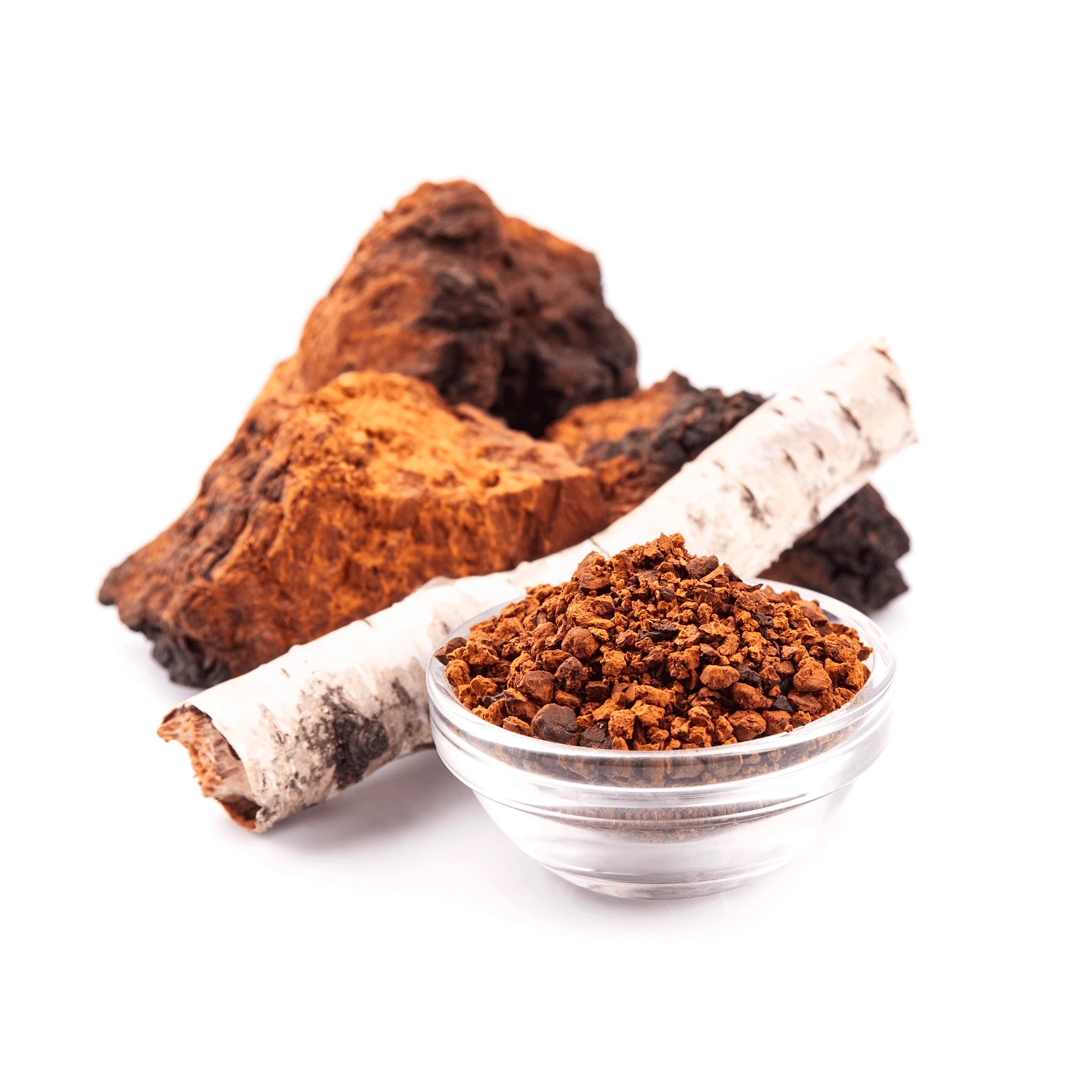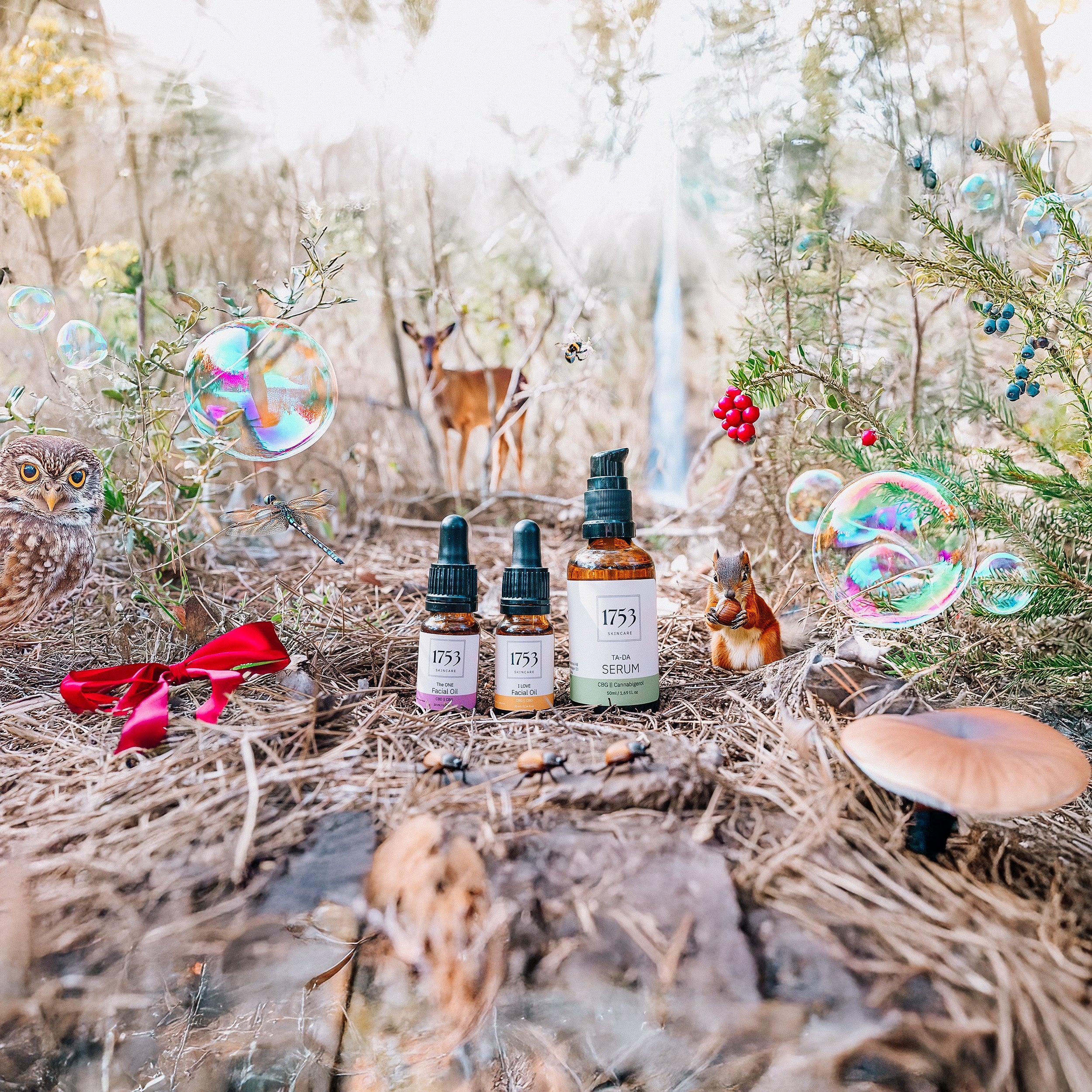Chaga Mushroom || A Complete Guide

A Complete Guide to Chaga Mushroom
This is five of the most common uses for the chaga mushroom:
1. Skin Health: Chaga is known for its antioxidant properties that can protect the skin from damage caused by free radicals and promote a healthy, youthful complexion.
2. Immune System Support: The mushroom supports the immune system by enhancing the body’s defense against diseases.
3. Anti-Inflammatory: Chaga has powerful anti-inflammatory properties that can help reduce inflammation in the body.
4. Digestive Health: It can support healthy digestion and gut function due to its prebiotic properties.
5. Energy Boost: Chaga may contribute to increased energy levels and improved overall well-being.
What is Chaga?
Chaga (*Inonotus obliquus*) is a medicinal mushroom that grows on birch trees in cold climates, primarily in Siberia, North America, and parts of Northern Europe. It appears as a black, coal-like growth on the tree's trunk, but inside, it is golden and orange.
This mushroom has been used for centuries in traditional medicine, especially in Russia and Scandinavia, for its many health benefits.
Health Aspects
Antioxidant Properties
Chaga is one of the most potent sources of antioxidants, particularly betulinic acid, melanin, and superoxide dismutase (SOD). Antioxidants help combat free radicals, which can cause oxidative stress and lead to premature skin aging. By neutralizing these free radicals, chaga can protect the skin from damage and promote a healthier, more youthful appearance.
The antioxidants in chaga also help reduce sun damage and may decrease the risk of skin cancer. This protective effect is particularly important in today's society, where we are exposed to high levels of environmental pollutants and UV radiation.
Anti-Inflammatory Effects
Inflammation is a common cause of many skin issues, including acne, eczema, and psoriasis. Chaga contains beta-glucans and other bioactive compounds that can reduce inflammation and alleviate these conditions. Regular use of chaga, whether through diet or topical application, can help diminish inflammation and improve skin health.
The anti-inflammatory properties of chaga can also help reduce redness and swelling in the skin, making it ideal for individuals with sensitive skin or chronic skin diseases.
Protection Against UV Radiation
Melanin, one of the bioactive compounds in chaga, is the same pigment found in human skin that provides natural protection against UV radiation. While chaga should not replace sunscreen, its melanin content can provide an additional layer of protection against harmful UV rays and help prevent sun damage to the skin.
It’s also interesting to note that melanin in chaga may contribute to evening out skin tone and reducing the occurrence of dark spots caused by sun exposure.
Skin Healing and Regeneration
The beta-glucans in chaga have also been shown to promote the skin's healing processes. They can support collagen production, which is vital for the skin's structure and elasticity. This can be particularly beneficial for accelerating the healing of wounds and improving the overall appearance and firmness of the skin.
By enhancing collagen production, chaga may also help reduce the occurrence of wrinkles and fine lines, making the skin appear younger and more vibrant.
How Chaga Grows
Chaga primarily grows on birch trees in cold climates and can take many years to develop. It parasitizes the tree and extracts nutrients from the host while slowly growing into a hard, black lump. Chaga can be harvested without killing the tree, and the process usually involves cutting the mushroom from the tree's trunk.
Chaga prefers birches that are at least 40 years old and can grow for up to 20 years before being harvested. The harvesting process requires precision and knowledge to ensure that the mushroom is not damaged and that the tree can continue to grow.
Uses and Historical Use
Traditional Medicine
Chaga has a long history of use in traditional medicine, particularly in Siberia and Northern Europe. Indigenous cultures have used chaga as a natural remedy for various ailments, including digestive issues, heart disease, and cancer. It was often brewed as tea for its health-promoting properties.
In Siberia and Russia, chaga has traditionally been used to strengthen the immune system and improve the body's resilience against diseases. During World War II, soldiers used chaga to enhance endurance and recover faster from injuries and illnesses.
Modern Use
Today, chaga is used in many forms, including powders, tinctures, capsules, and skincare products. Its popularity has increased in the Western world due to its extensive health benefits, especially in areas like immune support and anti-aging.
Chaga supplements are often sold as immune-boosting agents and anti-inflammatory products. There are also many skincare products that contain chaga extract, leveraging the mushroom’s antioxidant and skin-healing properties.
Conclusions
Chaga is a powerful medicinal mushroom with numerous health benefits, particularly for the skin. Its antioxidant, anti-inflammatory, and protective properties make it a valuable addition to both traditional and modern healthcare. By incorporating chaga into your daily routine, you can benefit from its ability to promote healthy and youthful skin, strengthen the immune system, and enhance your overall well-being.
Tips for Including Chaga in Your Daily Routine
- Chaga Tea: Brew a cup of chaga tea using dried chaga or chaga powder. It’s a simple and effective way to enjoy the mushroom's health benefits.
- Chaga Supplements: Add chaga capsules or tablets to your daily diet. These are readily available and a good way to ensure you get a sufficient dose. Read more about our Chaga supplement that also includes Reishi, Lion's Mane, and Cordyceps!
- Smoothies: Add chaga powder to your morning smoothies for an energy boost and antioxidants.
- Skincare: Use skincare products that contain chaga extract to take advantage of its skin-healing properties.
- Cooking: Incorporate chaga powder into various recipes, such as soups and sauces, to enhance the nutritional content of your meals.
By integrating chaga into your lifestyle, you can improve your skin health and overall well-being in a natural and effective way.




Comments